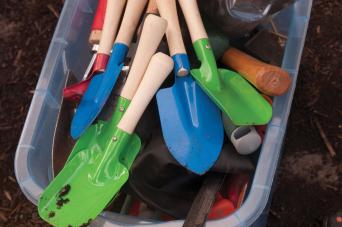
The Passionate Gardener: Accessibility Hacks for Senior Gardeners
According to the National Gardening Association, 78 million people garden in America. Many feel they have to give it up as they become less physically able. However, gardening is really good for seniors, enriching their lives physically, mentally and spiritually.
Many changes occur as a person ages. They are not only physical but also emotional, cognitive and social. As we age, we need to admit we can’t do everything we used to. Forget about doing everything in one day. Most accidents happen when we are tired and not paying close attention. Let’s face it — we are not 25 years old anymore!
I would like to address many issues confronting seniors, with some general gardening guidelines that will assist everyone in their gardening practices. Gardening can be used in a therapeutic way to address these issues and to help improve them. Many of the changes involved in aging can be addressed by modifications to gardening practices, approaches and tools.
Vision
- Paint tools a bright color or wrap in brightly colored tape to make them easier to find and harder to lose.
- Use pelletized seed.
- Use vertical planting, such as growing cucumbers on a trellis, to reduce stooping and bending.
- Make sure paths are smooth and at least 4 feet wide. Check for hazards — roots, uneven ground, loose steps, rocks, etc. Do this with a friend or family member who may see things you missed.
Physical
- Get help for heavy lifting and digging.
- Use raised beds, Earth Boxes or other containers for growing flowers and vegetables to reduce the need to bend or kneel. Height is up to the individual, but make the beds narrow so no reaching is necessary.
- Give up the power tools.
- Look for hand tools with better leverage and improved grips. Keep them sharp.
- Make sure the soil can be easily worked. Use lightweight, soil-less mixtures and add lots of perlite.
- Consider doing more indoor gardening (houseplants, cuttings, herbs, etc.). There are container specialists who can assist you with moving large pots and with other heavy chores.
- Create an easy container garden by placing pots on an extra patio table.
- Avoid hanging baskets. They dry out too fast, need more fertilization and are difficult to reach.
- Frequent resting periods in a shady or cool place are needed. Install a convenient bench, and use it!
- A bathroom nearby could be important.
- Attend to minor injuries so they don’t become major. Soak cuts and punctures in mild salt water.
Temperature
As we age, we don’t tolerate temperature extremes and changes as well as we used to.
- Garden early in the morning or late in the day. Try to avoid the hours between 10 a.m. and 2 p.m.
- Keep a water bottle handy and avoid alcoholic beverages.
- Wear a hat and lightweight, loose-fitting clothes that cover skin. Apply sunscreen, insect repellent and lip balm.
Cognitive
- Keep the garden plan simple.
- Use plants that trigger memories.
- Create a distinctive focal point for easier orientation.
- Allow plenty of time for any gardening activity; keep the pace leisurely.
Societal roles
As we age, family roles change. An elderly person can become more dependent economically; family and friends could move or die, increasing a sense of isolation. Gardening can help with self-esteem and confidence. Here are some recommendations:
- Keep gardening activities low-cost.
- Let the gardener have control over his or her own area.
- Social activities associated with the garden should be encouraged.
- Encourage gardeners to teach others. Inter-generational activities are very effective.
For further reading
“The Able Gardener: Overcoming Barriers of Age & Physical Limitations.” Kathleen Yeomans (1993, Storey Communications)
Accent on Living magazine, Accent Publications, Box 700, Bloomington, IL 61702
Arthritis Today magazine, Arthritis Foundation, 1314 Spring Street NW, Atlanta, GA 30309

